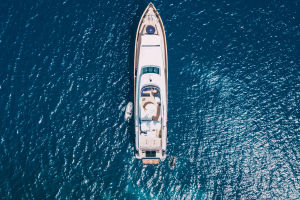Nautical Nemeses
Traversing the vast oceans, wooden boats stand as one of humanity's earliest navigation tools.
However, the passage of time reveals a persistent challenge: borers' erosion of the boats' bottoms.
This article delves into the underlying causes of bottom rot in wooden boats and proposes effective prevention and treatment measures.
1. Cause Analysis:
Moisture and Humidity:
Prolonged immersion in seawater leads to the absorption of significant water content by the hull, creating a conducive humid environment. This moisture becomes an inviting breeding ground for borers. The softening of wet wood facilitates easier borer infiltration, accelerating structural damage.
Borer Erosion:
The ocean hosts diverse borers, including sea earworms, sea moths, and shipworms. These organisms sustain themselves by feeding on wood and gnawing away at the wooden structure to obtain nutrients.
The rate of borer infestation varies depending on factors such as water temperature, quality, and the type of wood involved.
Lack of Protective Measures:
Some wooden boats lack essential protective measures, such as anti-corrosion treatments and coating applications. This oversight renders the hull more susceptible to borer infestation. Neglected hulls, devoid of timely repair and maintenance, become prime targets for decay.
2. Prevention and Control Measures:
Anti-Corrosion Treatment:
Incorporating anti-corrosion treatment methods during boat construction is imperative. Wood preservatives, like coal tar and petroleum-based products, can enhance the wood's resistance to decay. These preservatives effectively deter borer infestation.
Coating Protection:
Protective coatings on the hull's bottom, such as waterproof coatings and anti-corrosion paints, form a barrier against moisture and moth intrusion. This protective film extends the hull's lifespan, safeguarding it against decay.
Regular Inspection and Maintenance:
Scheduled hull inspections are essential for the early detection of issues. Prompt repairs, including addressing moth-damaged areas and replacing compromised wood, are crucial in preventing further deterioration.
Control of Humidity:
Efforts to minimize prolonged exposure to humid environments are paramount. They enhance hull sealing and install adequate ventilation to control humidity levels, thereby curbing borer proliferation.
Utilization of Alternative Materials:
Exploring alternative materials, such as fiberglass and carbon fiber, presents viable options. These materials boast superior corrosion resistance and moth resilience, mitigating the risk of decay.
Conclusion:
The degradation of wooden boat bottoms is a multifaceted issue necessitating comprehensive mitigation strategies.
Through anti-corrosion treatment, coating protection, regular maintenance, and consideration of alternative materials, the service life of wooden boats can be prolonged, ensuring navigation safety. Prioritizing hull protection and maintenance is imperative for the secure navigation of wooden vessels at sea.


